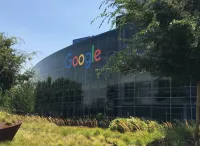Google Meet is a video communication service by Google, replacing Google Hangouts and Google Duo. As of November 1, 2022, Google Meet effectively absorbed Google Duo, with the Duo mobile app renamed as Meet and the original Meet app scheduled for deprecation. Google Meet is designed for video conferencing and online meetings.
February 2017: Quiet iOS app release
In February 2017, Google quietly released an invite-only iOS app for Google Meet.
March 2017: Google Meet formally launched
In March 2017, Google formally launched Google Meet as a video conferencing app for up to 30 participants. It was described as an enterprise-friendly version of Hangouts and was available for desktop, Android, and iOS.
March 2020: Google Meet rolled out to personal accounts
In March 2020, Google rolled out Google Meet to personal (free) Google accounts.
March 2020: Google extends advanced features
In March 2020, Google temporarily extended advanced features present in the enterprise edition to anyone using Google Workspace or G Suite for Education editions.
April 2020: Plans to support the AV1 video codec announced
In April 2020, Google announced plans to support the AV1 video codec within Google Meet.
April 2020: Google Meet made available to all users
In April 2020, during the COVID-19 pandemic, Google announced that Meet would be available to all users, not just Google Workspace users. The use of Meet increased significantly.
May 2020: Asus unveils videoconferencing hardware for Google Meet
In May 2020, Asus unveiled videoconferencing hardware designed for use with Google Meet in conference room settings, including a "Meet Compute System" mini PC, and a dedicated camera and microphone.
August 2020: Report of merging Google Duo with Google Meet
In August 2020, it was reported that Google was planning to eventually merge Google Duo with Google Meet.
September 15, 2020: Google unveils Meet Series One
On September 15, 2020, Google unveiled Meet Series One, in partnership with Lenovo, which includes a Meet Compute System with Edge TPU, "Smart Camera", "Smart Audio Bar" with noise reduction, and a choice of remote control or touchscreen that supports the Google Assistant.
February 2021: New very low-bitrate codec for speech compression called "Lyra" announced
In February 2021, Google announced a new very low-bitrate codec for speech compression called "Lyra" for Google Meet, that can operate with network speeds as low as 3 kbit/s.
December 2021: Objective to merge Google Duo and Google Meet dropped
In December 2021, Google dropped the objective to merge Google Duo with Google Meet, and Duo continued to be available and updated.
January 2022: Removal of advanced features for educators and workspace users
In January 2022, Google removed advanced features for educators and workspace users unless they subscribed.
June 2022: Google reverses course, announces Duo merging into Meet
In June 2022, Google reversed course and announced that Google Duo would, in fact, be merged into Google Meet. The merger began in August, with the Duo mobile app being renamed Meet.
October 18, 2022: Compatibility with Samsung Smart TV
On October 18, 2022, Google Meet offered compatibility in Samsung Smart TV.

November 1, 2022: Google Meet replaces Google Duo
On November 1, 2022, Google Meet replaced the consumer-facing Google Duo. The Duo mobile app was renamed Meet, and the original Meet app was set to be phased out.
March 9, 2024: Google Meet support was discontinued on Samsung Smart TV
On March 9, 2024, Google Meet support was discontinued on Samsung Smart TV.

Mentioned in this timeline

Google LLC is a multinational technology company specializing in online...
Google Hangouts a multi-platform instant messaging service by Google originated...

September is the ninth month of the year in the...
Trending

2 months ago Rivian Announces Layoffs of Over 600 Workers Amid Electric Vehicle Market Slowdown

5 months ago Paul Rudd Stars in New Dark Comedy with Tim Robinson; Friendship Explored
1 month ago Rocket Lab's Q3 2025 Results: Record Revenue Growth Fuels Stock Surge.

9 months ago Pandya's IPL 2025 Season Begins Amidst Dhoni's Stumping and Sharma's Milestone.

Festivus is a secular holiday celebrated on December rd as an alternative to the commercialism of Christmas Created by author...
The North American Aerospace Defense Command NORAD is a joint United States and Canada organization Its primary mission is to...
Popular

Candace Owens is an American conservative political commentator and author...

Tucker Carlson is an American conservative political commentator known for...

XXXTentacion born Jahseh Dwayne Ricardo Onfroy was a controversial yet...

Ilhan Omar is an American politician currently serving as the...

Kashyap Pramod Patel is an American lawyer who became the...

Bill Gates an American businessman and philanthropist revolutionized personal computing...
